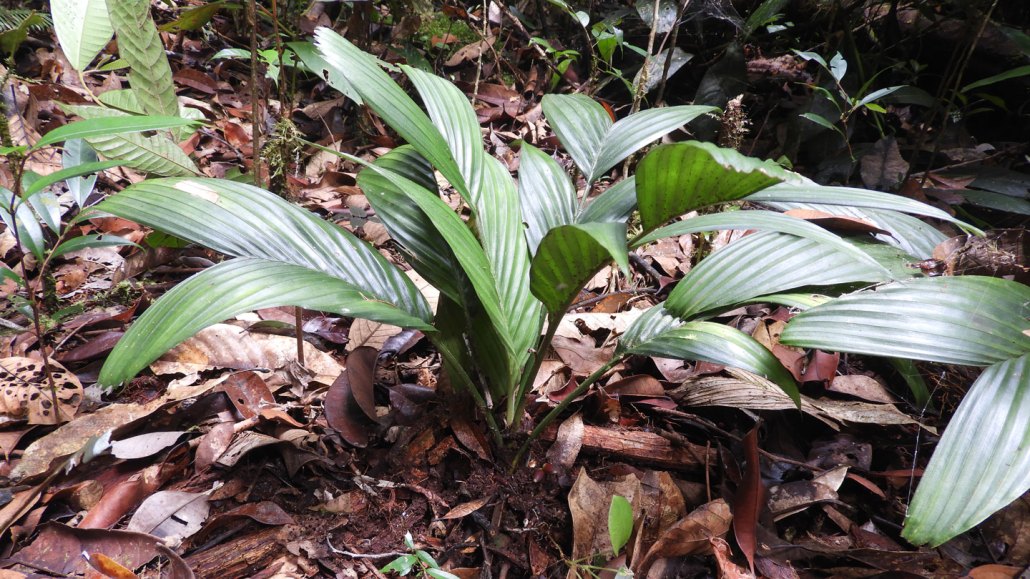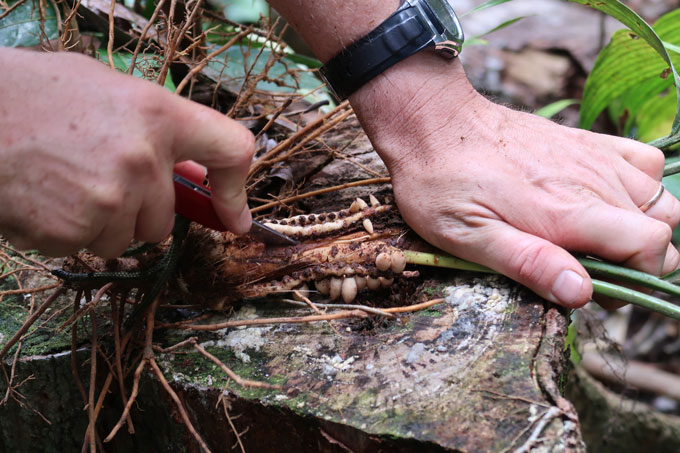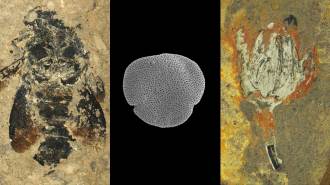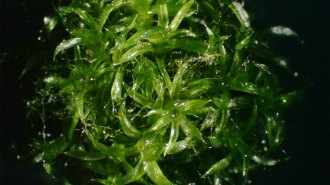
Fruiting or flowering underground, like the newly described palm Pinanga subterranea (shown) does, is rare, but has been documented in 33 plant families so far.
Agusti Randi
Palm trees are often associated with Hollywood Boulevard and tropical resorts, but their relatives in the palm family Arecaceae can come in many different shapes and sizes. And one shuns the limelight to an almost absurd degree — the new-to-science Pinanga subterranea palm grows its flowers and fruit entirely underground.
“We knew immediately that it’s a really odd palm,” says Benedikt Kuhnhäuser, a botanist at Royal Botanic Gardens, Kew, in Richmond, England.
Malaysian botanist Paul Chai first noticed the palm growing in Lanjak Entimau Wildlife Sanctuary, on the island of Borneo, in the late 1990s. However, Kuhnhäuser says, Chai lost all his photographic evidence for the enigmatic plant during flooding in Kuching, the capital of the Malaysian state of Sarawak. In 2018, Chai told Kuhnhäuser and other botanists visiting Borneo about the lost palm over breakfast. The team embarked on a multiday trek to reach the sanctuary and found, to their surprise, that the underground palm was actually abundant.
Growing anything other than roots underground is rare, but examples can be found across the plant kingdom. South-central Africa is home to an “underground forest” where many plants flower aboveground but grow woody material below; a Bornean pitcher plant buries its traps under the soil (SN: 7/8/22). In fact, plants across 33 different families have been found to conceal flowers or fruits underground, but burying both is exceedingly rare. Besides the underground palm, “there’s only one other plant in the world that does this,” Kuhnhäuser says, “and that’s some tiny orchid genus called Rhizanthella in Australia.”
Just because the palm is new to science doesn’t mean no one knew it existed. “Several local people, especially Indigenous ones, knew the palm,” says Cibele de Cássia Silva, a botanist at the University of Campinas in Brazil who was not involved with the research. The local people not only had names for it, but some dig up and eat the inconspicuous palm’s fruit as a snack. For Cássia Silva and Kuhnhäuser, this highlights the importance of not only engaging with Indigenous knowledge but also including that knowledge in scientific papers.

The biology of the palm is also fascinating. Getting flowers pollinated and seeds dispersed is often vital for plants, so how does a plant pull it off underground? The palm may rely at least partially on self-pollination, and Cássia Silva suspects that beetles may be able to move pollen between plants even belowground. The researchers also saw wild pigs digging up its fruits, which means the animals could help the palm spread its seeds through feces. The team described the plant in the fittingly named journal Palms in June 2023 and reported on its unique biology around the same time in Plants, People, Planet.
Kuhnhäuser’s Kew colleague Sidonie Bellot is now working on unraveling the relationships between the underground palm and its relatives, which will help reveal the steps the palm took to reach its subterranean lifestyle; many of its relatives live close to the ground anyway, so going all the way under may not have been that large of a leap.






